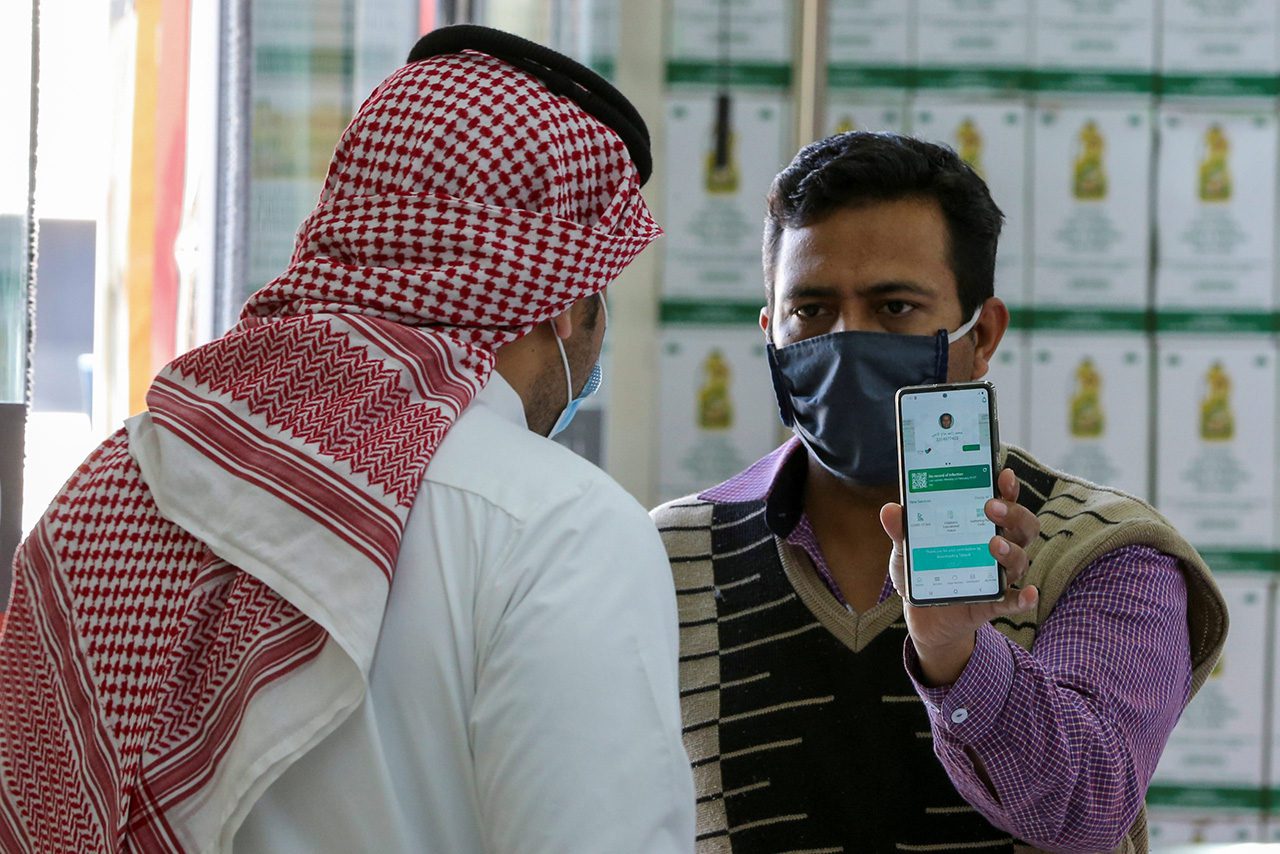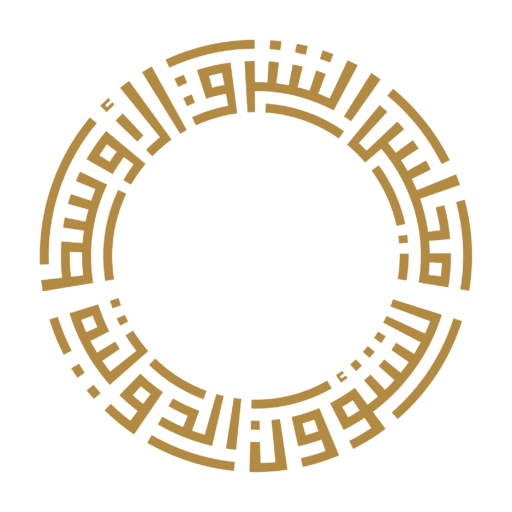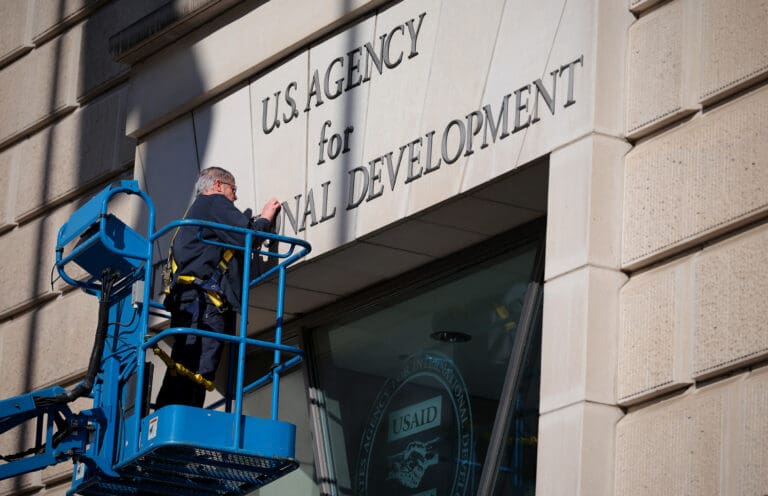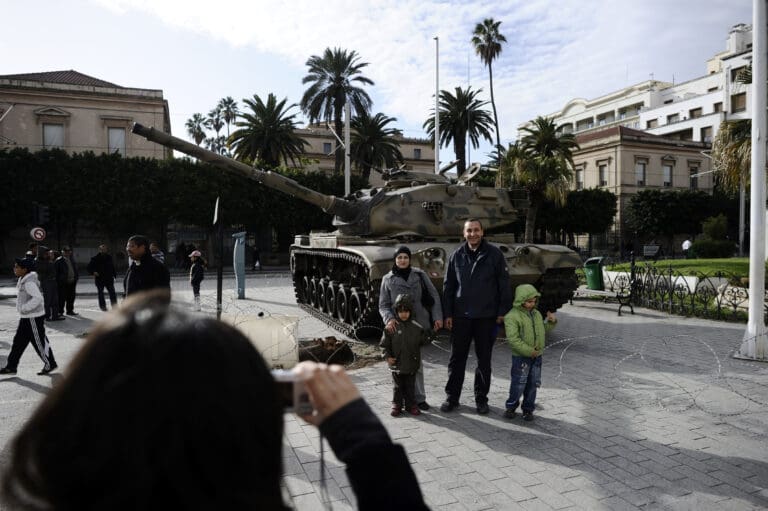
The COVID-19 Pandemic
in the Gulf:
IMPACT, RESPONSE, AND IMPLICATIONS
Policy Note, July 2022
Over the past decade, the Gulf Cooperation Council (GCC) countries have faced growing challenges to their security and prosperity. Since the Arab Spring protests, leaders have placed a strong emphasis on internal stability and the need to manage reform. They have sought to lessen their dependence on hydrocarbon revenues while diversifying economies. They have responded to perceived external threats and a changing geopolitical environment. And they faced these challenges most recently during a period of relatively low oil prices, which has strained financial resources and pushed them to adopt fiscal reforms. The COVID-19 pandemic has compounded many of these challenges and is likely to have a long-term impact on the region’s economies.1
The Spread of COVID-19 in the Gulf
On January 29, 2020, health authorities in the United Arab Emirates (UAE) confirmed the country’s first case of COVID-19, a visitor who had arrived from China 14 days earlier. Bahrain saw its first case on February 21. Oman and Kuwait confirmed cases on February 24, Qatar on February 27, and Saudi Arabia on March 2; each of these seems to have originated in Iran. While incidence of the virus initially grew slowly in each of these countries, confirmed cases of COVID-19 accelerated in mid-March as the virus gained a foothold among the resident population and the number of daily cases rose precipitously (see figure 1). From a combined 114 confirmed cases on March 1, the number of cases in the Gulf grew to 844 by March 15 and 4,056 by April 1, 2020.2
Source: Our World in Data COVID-19 Database3
Confirmed cases in GCC countries continued to grow rapidly through the spring of 2020, beginning to level off over the course of the summer. Still, the total number of cases in the Gulf reached over 1 million in early January 2021 and 2 million by the beginning of June as the Gulf experienced multiple waves of the virus. By mid-September 2021, total cases across the GCC countries leveled off at 2.5 million as vaccination rates increased. However, as evident across the globe, cases in the Gulf spiked again after the emergence of the Omicron variant: by mid-January 2022, nearly two years after the Gulf’s first case was identified, the region was closing in on 2.8 million cases and, by mid-June 2022, it had seen over 3.7 million cases.
On a comparable per capita basis, the total number of cases in mid-June 2020 was 62,180 cases per million people (figure 2). This is low when compared with high-income countries, at 258,566 cases per million, but higher than the number of cases per capita in the broader Middle East and North Africa (MENA) region, with non-GCC MENA countries reporting only 41,188 cases per million.4 Notably, Saudi Arabia—with 22,104 cases per million population—has seen lower rates of infection than its GCC neighbors, while Bahrain (at 343,148 per million) has experienced one of the highest rates of infection in the world.5
Source: Our World in Data COVID-19 Database.6 Note: GCC and Non-GCC MENA aggregates are calculated by the author.
Across the GCC countries, mortality rates associated with the virus have remained low. By mid-June 2022, the Gulf region had documented 20,466 deaths associated with COVID-19 or, on a per capita basis, 344 deaths per million population. By comparison, COVID-19 deaths across high-income countries have averaged 2,003 deaths per million, while in the non-GCC MENA region, they have averaged 707. In part, the low fatality rate associated with COVID-19 in the Gulf reflects wide-scale testing and the ability of health authorities to identify cases of the virus, including asymptomatic cases and those with less critical symptoms within a largely youthful population. It also reflects the relative strength of Gulf healthcare systems and the efficacy of the public health response.
Pandemic Response in GCC Countries
Initially, authorities across the GCC countries attempted to control the domestic spread of the virus through tightened border controls, health checks, and the suspension of flights to high-risk countries. Building on their experience with the Middle East Respiratory Syndrome (MERS) virus in 2012, governments ensured the preparation of isolation units in hospitals and expanded testing and contact tracing efforts. Through mid-March 2020, these initial control measures seemed effective in controlling the virus’s spread. However, as the number of cases ramped up governments began implementing more rigorous restrictions. These varied across countries, but they typically included travel bans, school closures, restrictions on public gatherings, closures of mosques and non-essential businesses, suspension of public holidays celebrations, and implementation of nightly curfews and mobility restrictions. Even as they have eased restrictions, Gulf states have enforced a mask mandate and physical distancing requirements where possible.
While Gulf governments ramped up the strictness of closures and other policy responses around the same period, they have diverged in how they have managed the easing of restrictions and the reopening of economies, reflecting both trends in the incidence of the virus and economic pressures facing the country. Bahrain, for example, initially maintained the least rigorous restrictions in the Gulf; having closed, however, it was careful in returning to full openness. The UAE took early steps to reopen the economy to ease pressures on private sector businesses. Oman, having imposed significant lockdown measures, kept these restrictions in place for longer periods than other countries but then opened up more quickly than other countries towards the beginning of 2021. Kuwait, Qatar, and Saudi Arabia began emerging from strict lockdowns with the most cautious approaches at around the same period. Each of these countries have had to periodically reimpose restrictions as new waves of the virus have emerged over the past year.
Over the summer and early autumn of 2021, the Gulf states made strides in expanding vaccination coverage, ensuring ready access to vaccines while implementing strict vaccine mandates requiring individuals to be fully vaccinated to return to normal economic life. While some vaccine hesitancy remains, vaccination rates across the Gulf grew quickly, and several GCC states lead the world in terms of the shares of their populations that are inoculated. In turn, daily new cases of COVID-19 dropped significantly, at least over the second half of 2021. While the emergence of the Omicron variant saw daily cases increase precipitously in early 2022, deaths and hospitalizations were minimized by vaccination rates.
To manage the economic fallout from the pandemic, GCC countries have spent significant sums on stimulus packages to support workers and private sector firms. These packages have included reductions in official fees, rents, and social insurance contributions, wage subsidies for nationals in the private sector, and concessional loans to small and medium-sized enterprises (SMEs).7 Authorities have worked with banks to increase liquidity and facilitate access to loans as well as allow loan payment deferrals. As a share of total gross domestic product (GDP), these outlays have been relatively small in comparison with OECD countries, ranging between 1.5 percent in Kuwait to 6 percent in Bahrain. Here, Qatar’s fiscal response—worth a reported 14 percent of GDP—is an international exception. Overall, these efforts appear to have focused mostly on providing direct support to national workers and companies but only indirect support to guest workers. More importantly, the overall efficacy of these efforts remains unknown given limited transparency on policy implementation and outcomes.
Understanding Outcomes in GCC Countries
There are several broad factors that ensured that COVID-19 was able to take root so strongly in the Gulf. First, GCC states are more closely tied to the global economy than their MENA neighbors, particularly in terms of air travel. Dubai’s airport itself is the world’s fourth busiest airport in terms of international arrivals, while airports across the region serve as important transit points for international and regional flights. This global and regional connectivity ensured that the virus spread in the Gulf earlier than most other countries. Moreover, initial bans on flights from the early hotspot countries proved ineffective at stopping the virus because screening mechanisms were unable to identify infected but asymptomatic individuals.
Second, an initial lack of decisiveness on the part of policymakers may have given the disease room to spread. From international experience, two response methods seem to have been most effective. The first, followed by countries like South Korea, focused on early and extensive testing and tracing rather than economic closures.8 The second, exemplified by New Zealand, included rapid and comprehensive lockdowns to restrict community spread.9 GCC states deployed a mix of these approaches, which have been generally effective over time. However, having depended on procuring COVID-19 test capabilities from abroad, governments were only able to ramp up testing regimes gradually. At the same time, governments took incremental steps in implementing closures. The hesitation to shutter the local economy and the delayed implementation of robust testing and tracing allowed the virus to proliferate.
The GCC’s Unique Vulnerabilities
The Gulf’s large guest worker population further created an environment that was conducive to the rapid spread of the virus. Private sector firms typically provide low-skilled guest workers with crowded dormitories, often co-located in densely populated “industrial zones” with dormitories housing workers from other firms. Across the GCC countries, health authorities inspecting these labor camps found them to be hotspots for the virus. Moreover, they found it impossible to quickly reorganize these housing arrangements to allow for the physical distancing needed to contain the spread of the virus. Instead, they resorted to camp lockdowns and district isolation that raised concerns about the rights of workers and ensured that workers went without pay or access to services for extended periods.10
The broader dependence of these GCC economies on guest workers—both low-skilled and high-skilled—has left their private sectors vulnerable to the economic costs of the pandemic response. Notably, governments have provided wage subsidies that cover only nationals, a minority of the private sector workforce in the Gulf. Firms and guest workers have responded in multiple ways. Some transitioned—where possible—to telework arrangements. Others waited out lockdowns, with firms often covering housing costs but not wages. With the prolonged duration of the pandemic, many workers were laid off or resigned and have since returned to their countries of origin. The loss of human capital for government and the private sector is a cause for concern about the future costs of bringing talent back after the pandemic.
The COVID-19 pandemic has also raised concerns about food security in the GCC. Every country in the region relies heavily on imports to meet their food requirements. During past international crises, like the 2008 Great Recession, GCC countries experienced shortages when major producers of rice and other staples-imposed quotas on exports. Similar export quotas were put in place during the early stages of the pandemic. These export quotas, along with other disruptions to food supply chains, elevated worries in the GCC about the steady availability of food supplies. While they have been able to keep stores well-stocked, due largely to government stockpiling, the pandemic has ensured a renewed focus among policymakers on how to ensure food security during times of crisis.
Finally, the pandemic has underlined the continued dependence of the GCC economies on hydrocarbons and the vulnerability of the region to price shocks. After a five-year period of relatively low but steady oil prices, the pandemic triggered a sharp decline in global demand and a dramatic collapse in oil prices. Thus, at a time of dire need for additional fiscal space to stimulate the local economy and support an eventual recovery, GCC governments have had to draw on their sovereign wealth funds and raise sovereign debt abroad while slashing costs wherever possible. Budgetary pressures have triggered massive cuts in capital spending, delayed implementation of planned projects, and forced reductions to expatriate staff wages and numbers.
Rebuilding for the Future
With the wide application of vaccines for COVID-19, the global community is shifting its priorities from combatting the virus to economic recovery. Across the globe, policymakers, having focused in 2020 on stabilizing household incomes and employment, are now turning to planning a post-pandemic future. Those countries that will be most competitive and will rebound the fastest in the wake of the pandemic are being strategic about government investments in rebuilding. GCC countries have an opportunity to emerge from the COVID-19 pandemic better positioned to sustain their high standards of living and meet a host of potential future challenges, including public health crises, the impact of climate change, and the retreat of globalization.
First, it is essential that GCC governments carry out a comprehensive assessment of their COVID-19 response. While the vaccines in process will likely resolve the current crisis, the world remains vulnerable to unknown future pandemics. A comprehensive review of the response will help GCC governments refine their epidemic scenario planning and crisis management. This review would pave the way for future investments in the capabilities and preparedness of public health systems. Given the proximity and relative integration of GCC countries, notwithstanding the effects of the 2017 rift, such investments could become an area of focus for cooperation. More ambitiously, a regional center for disease control would improve coordination in tackling future pandemics and other health crises.
Securing the future also requires pushing forward with policy and institutional reforms more generally. In this regard, governments have implemented some reforms in the context of COVID-19 responses that bode well in both regards.11 The nature of the COVID-19 crisis has forced ministries to collaborate and take an all-of-government approach in a region known for vertical integration and weak coordination. Governments also have set up cross-sectoral task forces to address various aspects of the crisis, working across ministries and the business community to create solutions to specific challenges like supporting private sector companies and protecting trade flows. Moreover, the closure of government offices has pushed authorities to make more rapid strides in advancing e-government and m-government. This development, along with investments underway in financial, information, and communication technologies, should have a long-term positive impact on service delivery and economic diversification.
Finally, post-pandemic rebuilding should steer investments and reforms toward addressing prevailing structural economic priorities.12 These include continued efforts to expand the fiscal revenue base and prepare for the disruptive acceleration in the energy transition. They also involve strengthening corporate governance, enhancing government transparency, and promoting competition in the domestic economy, as well as the promotion of SME development, technology upskilling for the national workforce, and labor mobility for guest workers. Also, in alignment with food security concerns, investments in agrobusiness and agricultural technology, both locally and internationally, meet a variety of development objectives.
Given the ongoing fiscal pressures associated with volatile oil prices, governments should also consider moving away from public sector employment guarantees as a means of redistributing oil revenues to the possible implementation of a minimum basic income for citizens.13 The recent surge in international oil prices may undermine incentives for such reform in the short-term as countries prioritize recovery from the pandemic recession. However, long-term prospects for the oil sector, amid a growing global consensus on the need to lessen dependence on fossil fuels and combat climate change, suggest a need for Gulf states to prioritize diversification and public sector reform while they can.14




